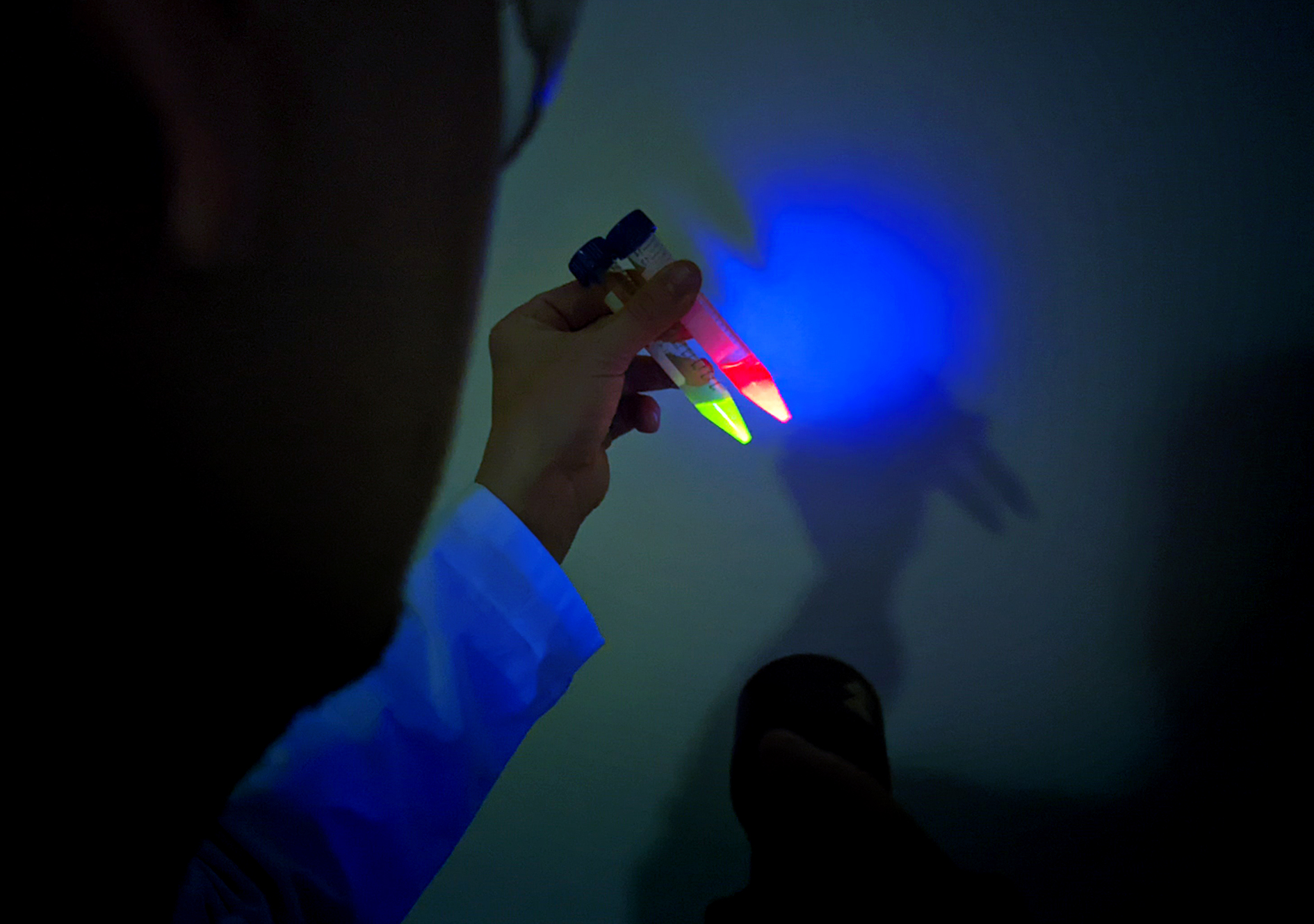Quick and gentle breast cancer diagnosis
New tumor diagnostic method
If breast cancer is suspected, doctors carry out a biopsy. However, this is invasive, painful and costly. It also takes several days to get the results. In the future, diagnosis could be made via a liquid biopsy of a patient’s blood — a gentle, cost-effective method that would deliver the results within just a few hours. A team of researchers at the Fraunhofer Institute for Applied Polymer Research IAP is working alongside partners on this innovative method.
If a suspicious lump is discovered in a patient’s breast, a biopsy is usually called for and a doctor will take small portions of tissue from the lump and have them examined in the laboratory. It is vital to find out whether the suspicious lump is a harmless change in the tissue or whether it is a sign of disease, i.e., a tumor. Currently, patients have to wait several days for the results. What’s more, a biopsy is expensive, painful and – be-cause it is an invasive method – brings with it certain risks, such as the wound becom-ing infected or neighboring tissue becoming damaged.
Quick and gentle: screening biomarkers in bodily fluids
Scientists at the Fraunhofer Center for Applied Nanotechnology CAN, a research division of Fraunhofer IAP in Hamburg, have set themselves the goal of making the conventional biopsy used to diagnose breast cancer redundant – along with all the disadvantages it entails. “In the LIBIMEDOTS project, we are working on detecting breast cancer via circulating tumor cells – together with Spain’s Universitat Rovira i Virgili, Universität Hamburg and the Medical Center Hamburg-Eppendorf,” explains Dr. Neus Feliu Torres, who has been leading the “Nanocellular Interactions” working group at Fraunhofer IAP via an Attract program since July 2020. If there is a tumor in the body, for example in the breast, a number of tumor cells may enter the bloodstream and other bodily fluids. If these cells can be detected there instead of by taking a biopsy of the tumor, there are numerous advantages. Firstly, the method is gentle — the doctor simply has to take a little blood from the patient. Secondly, the results are available within just a few hours. By pursuing this approach, the team of researchers hopes that, as well as discovering early-stage breast tumors faster and in a gentler manner, it will also be possible to assess whether a treatment is successful.
Enriching and detecting tumor cells
The examination principle is based on two pillars. The first involves enriching the tumor cells in the blood to enable them to be detected. “Compared to other somatic cells, tumor cells in the blood are only present at a ratio of one to one million. They are therefore extremely difficult to find and detect,” says Feliu Torres. To enrich the tumor cells, the Fraunhofer team is developing magnetic nanoparticles. This cargo enables the tumor cells to be collected and concentrated by a magnetic field. The second pillar is the specific binding of fluorescent particles to the surface of the enriched tumor cells in or-der to detect them. “This allows us to use the surface of the tumor cells for the specific binding of fluorescent particles. These then light up so brightly that just a few tumor cells need to be found to provide evidence,” explains the chemist and medical scientist. As the circulating tumor cells vary from patient to patient, it is not enough to use just one type of fluorescent particle. The team is therefore developing a range of different particles with specific binding properties to uncover the tumor cells. This will make the detection process more sensitive, more specific and quicker, as well as more cost-effec-tive.
Last modified:
